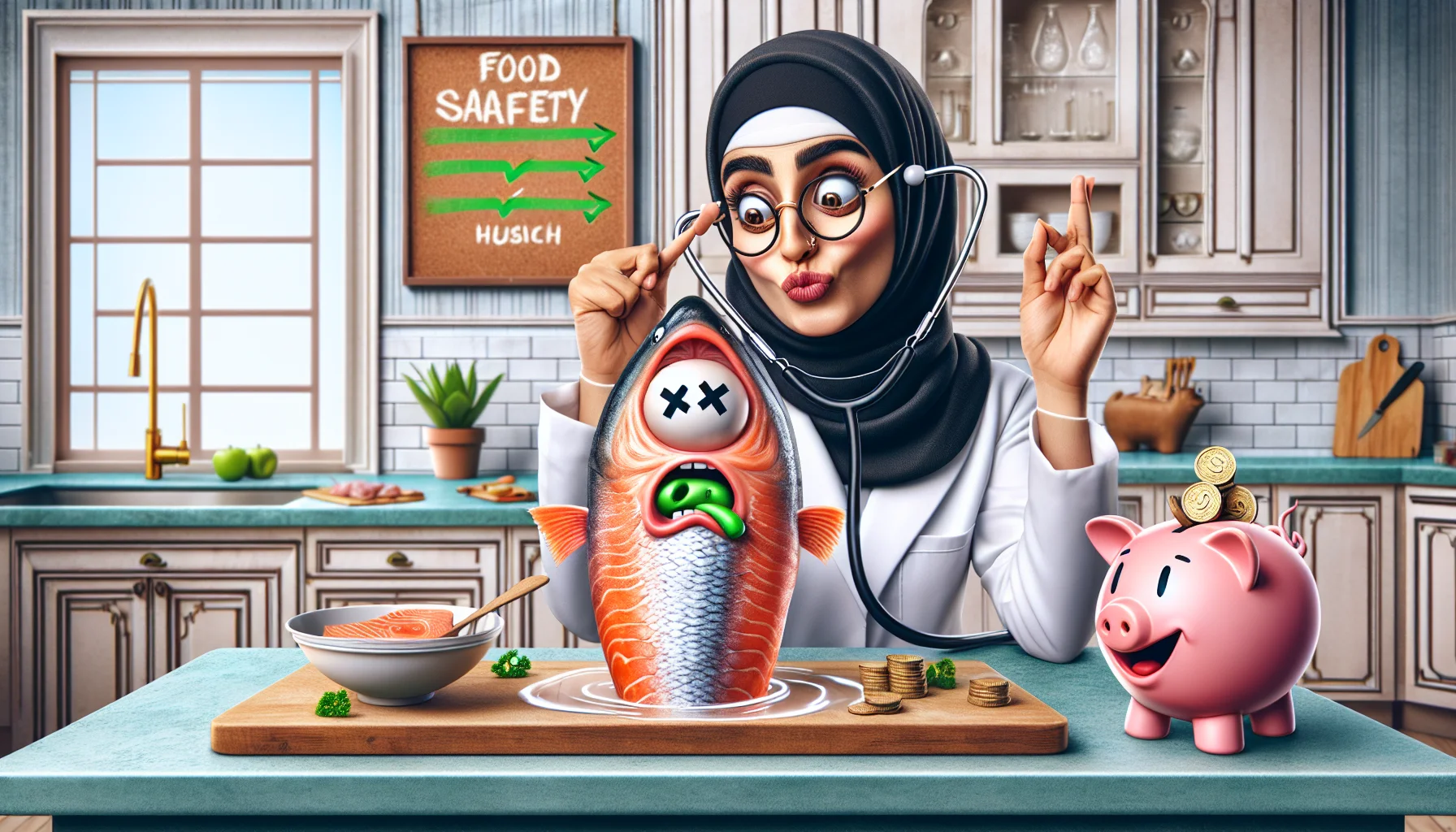How to know when salmon is bad Quiz
Test Your Knowledge
Question of
How to Know When Salmon is Bad
Recognizing when salmon has gone bad is crucial for maintaining a healthy diet. Consuming spoiled salmon can lead to foodborne illnesses, which may result in symptoms ranging from mild discomfort to severe health issues. Learning the signs of spoilage in salmon not only ensures the safety of your meals but also helps in reducing food waste by preventing the premature disposal of salmon that is still good to eat. This guide will help you identify the key indicators of bad salmon, ensuring that you enjoy this nutritious fish at its best quality.
Visual Signs of Spoilage
- Color Changes: Fresh salmon should have a bright pink or orange color. If it turns dull, grayish, or develops dark spots, it may be spoiled.
- Texture: The flesh of the salmon should be firm to the touch. If it feels slimy or sticky, it is a sign of spoilage.
- Presence of Mold: Any visible mold growth on the surface of the salmon is a clear indicator that it has gone bad and should not be consumed.
How Smell Indicates Salmon Quality
The smell of salmon is a powerful indicator of its freshness and overall quality, crucial for ensuring it's safe for consumption. Fresh salmon should have a clean, slightly briny scent reminiscent of the ocean. If the fish emits a strong, fishy odor, or smells sour or ammonia-like, it is a clear sign that the salmon is no longer fresh and may be unsafe to eat. Paying attention to the smell of salmon before purchasing or cooking it can help you enjoy not only a tastier meal but also avoid potential foodborne illnesses.
Taste and Texture Warning Signs
The taste and texture of salmon can serve as critical indicators of its freshness and safety for consumption. Fresh salmon should have a mild, subtle sea aroma and a moist, slightly firm texture. When salmon begins to spoil, it may develop a sour, rancid, or ammonia-like odor, signaling that it is no longer safe to eat. The texture may also become mushy or overly slimy, further indicating spoilage. It is crucial to avoid tasting the salmon if you notice any other signs of spoilage, as consuming spoiled salmon can lead to foodborne illness. Always trust your senses and err on the side of caution when assessing the freshness of salmon.
Health Risks of Eating Spoiled Salmon
- Food Poisoning
- Salmonella Infection
- Listeria Infection
- Botulism
- Stomach Cramps and Digestive Issues
- Nausea and Vomiting
- Diarrhea
- Fever and Chills
- Dehydration
- Weakness and Fatigue
Proper Storage Practices for Salmon
To extend the freshness and prevent spoilage of salmon, proper storage practices are essential. When storing salmon in the refrigerator, it should be kept in the coldest part, ideally on ice, and consumed within 1-2 days. If the salmon won't be used within that timeframe, freezing is recommended to preserve its quality. Before freezing, wrap the salmon tightly in plastic wrap, followed by aluminum foil or place it in a heavy-duty freezer bag to prevent freezer burn. Properly stored, salmon can be kept frozen for up to 6 months. Thawing should be done gradually in the refrigerator to maintain the texture and flavor of the salmon. Avoid refreezing thawed salmon, as this can lead to quality loss and potential spoilage.
When to Choose Fresh Over Frozen Salmon
| Aspect | Fresh Salmon | Frozen Salmon |
|---|---|---|
| Shelf Life | 1-2 days in the refrigerator | Up to 12 months in the freezer |
| Nutritional Value | High in omega-3s, vitamins, and minerals. Best consumed fresh for optimal nutrient retention. | Slightly reduced omega-3 content due to freezing process, but still a good source of vitamins and minerals. |
| Recommended Uses | Ideal for grilling, baking, or pan-searing for immediate consumption. | Great for meal prepping in advance, or when fresh is not available. |












